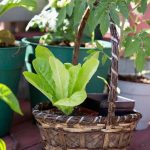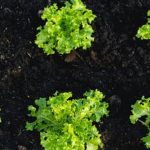Wyoming vegetable gardening has its own unique set of challenges and considerations due to the state’s climate and growing conditions. From preparing the soil to understanding the growing season and dealing with pests, successful vegetable gardening in Wyoming requires specific knowledge and techniques.
Choosing the right vegetables for Wyoming’s climate is crucial for a successful harvest. With its short growing season and extreme temperature fluctuations, it’s essential to select varieties that can thrive in these conditions.
In this comprehensive guide to Wyoming vegetable gardening, we will explore tips for preparing the soil, understanding Wyoming’s growing season and climate challenges, best practices for watering and irrigation, dealing with pests and diseases, as well as resources available for Wyoming vegetable gardeners. Whether you’re a seasoned gardener or just starting out, this guide will equip you with the knowledge needed to grow a successful vegetable garden in Wyoming.
Choosing the Right Vegetables for Wyoming’s Climate
When it comes to choosing the right vegetables for Wyoming’s climate, it’s important to consider the short growing season and often harsh weather conditions. However, with some careful planning and selection, successful vegetable gardening in Wyoming is definitely possible.
One of the key factors to consider when choosing vegetables for Wyoming is selecting cold-hardy varieties that can withstand the state’s often unpredictable weather. Vegetables such as carrots, beets, kale, spinach, and peas are well-suited to Wyoming’s climate and can be planted early in the season.
Additionally, it’s important to choose vegetables that have a relatively short growing season to ensure a successful harvest before the first frost hits. Crops such as radishes, lettuce, arugula, and Swiss chard can be planted early in the spring and harvested before the colder temperatures set in.
Another consideration when selecting vegetables for Wyoming is to prioritize drought-resistant varieties. With Wyoming’s dry climate, it’s important to choose vegetables that can handle periods of limited water supply. Drought-resistant options include tomatoes, peppers, eggplant, and zucchini.
By carefully selecting cold-hardy, short-seasoned, and drought-resistant vegetable varieties, Wyoming gardeners can increase their chances of a successful harvest despite the state’s challenging climate.
tr”>
tr”>
| Cold-Hardy Vegetables | Short Growing Season Vegetables | Drought-Resistant Vegetables |
|---|---|---|
| Carrots | Radishes | Tomatoes |
| Beets | Lettuce | Peppers |
| Kale | Arugula | Eggplant |
Tips for Preparing the Soil in Wyoming
When it comes to successful Wyoming vegetable gardening, one of the most crucial factors to consider is the quality of the soil. The state’s rocky and alkaline soil can pose challenges for gardeners, but with proper preparation, it is possible to create a fertile environment for a thriving vegetable garden.
Soil Testing and Amendment
Before planting your vegetables, it is essential to test the soil to determine its pH levels and nutrient content. Wyoming vegetable gardeners can obtain soil testing kits from their local cooperative extension office or gardening center. Based on the results, gardeners may need to amend the soil with organic matter such as compost or well-rotted manure to improve its structure and fertility.
Raised Beds and Container Gardening
Due to Wyoming’s challenging soil conditions, some gardeners opt for raised beds or container gardening as an alternative to planting directly in the ground. This allows for greater control over the soil composition and drainage, making it easier to create a suitable growing environment for vegetables. Additionally, raised beds can warm up more quickly in the spring, extending the growing season for Wyoming vegetable gardens.
Mulching and Cover Cropping
Applying mulch to your vegetable garden helps retain moisture, regulate soil temperature, and suppress weed growth. In Wyoming’s arid climate, mulching is especially important for conserving water and protecting plants from temperature extremes. Additionally, cover cropping with nitrogen-fixing plants like clover can help improve soil fertility over time, making it an effective long-term strategy for maintaining healthy soil in Wyoming vegetable gardens.
By implementing these tips for preparing the soil in Wyoming, vegetable gardeners can enhance their chances of success and ensure that their plants have a strong foundation for optimal growth and productivity.
Understanding Wyoming’s Growing Season and Climate Challenges
Wyoming’s growing season and climate present unique challenges for vegetable gardeners. With a short growing season and extreme temperature fluctuations, it’s essential to understand the specific conditions of the state in order to have a successful harvest.
The average growing season in Wyoming ranges from just 40 to 90 days, depending on the location within the state. This means that gardeners must carefully select vegetables that can mature within this short timeframe. Quick-maturing vegetables such as lettuce, spinach, radishes, and peas are good choices for Wyoming vegetable gardening. Additionally, cold-hardy crops like kale, cabbage, and carrots can withstand the unpredictable spring and fall frosts that are common in Wyoming.
In addition to the short growing season, Wyoming’s climate presents challenges such as low humidity, strong winds, and intense sunlight. These factors can lead to soil moisture evaporation and dehydration of plants. Gardeners should consider using mulch to retain soil moisture and protect plants from intense sunlight and wind. Raised bed gardening is also an effective way to improve drainage and prevent soil erosion.
According to the USDA Plant Hardiness Zone Map, Wyoming has zones ranging from 3a to 6b. This indicates the average annual minimum winter temperatures experienced in different parts of the state. Gardeners should be mindful of their specific hardiness zone when selecting vegetables for their garden. By understanding these climate challenges and selecting appropriate vegetables and gardening techniques, Wyoming vegetable gardeners can maximize their chances of a successful harvest despite the daunting environmental conditions.
| Wyoming Vegetable Gardening Challenges | Recommended Solutions |
|---|---|
| Short Growing Season | Choose quick-maturing vegetables; utilize season extenders such as row covers or cold frames. |
| Low Humidity & Strong Winds | Use mulch to retain soil moisture; consider raised bed gardening to improve drainage. |
| Intense Sunlight | Protect plants with shade cloth or by strategically planting taller crops for natural shade. |
Best Practices for Watering and Irrigation in Wyoming
When it comes to Wyoming vegetable gardening, one of the most important aspects to consider is proper watering and irrigation. The arid climate in Wyoming presents a unique challenge for gardeners, but with the right practices, it is possible to have a successful vegetable garden.
Here are some best practices for watering and irrigation in Wyoming:
- Choose drought-resistant vegetables: Selecting vegetables that are well-suited for dry conditions can help reduce the amount of water needed for your garden. Some examples of drought-resistant vegetables include tomatoes, peppers, and certain varieties of beans and peas.
- Use efficient watering methods: In Wyoming, where water may be scarce, it’s important to use efficient watering methods such as drip irrigation or soaker hoses. These methods deliver water directly to the base of the plants, minimizing waste due to evaporation.
- Water deeply and infrequently: Instead of frequent shallow watering, it’s better to water deeply and less often. This encourages plants to develop deeper root systems, making them more resilient during dry periods.
It’s important for Wyoming vegetable gardeners to be mindful of water usage and prioritize conservation efforts. By implementing these best practices for watering and irrigation, gardeners can achieve a bountiful harvest while using water wisely in this challenging climate.
Dealing With Pests and Diseases in Wyoming Vegetable Gardens
Pests and diseases can pose significant challenges to Wyoming vegetable gardening, but with the right knowledge and strategies, gardeners can effectively manage these issues. Here are some tips for dealing with pests and diseases in Wyoming vegetable gardens:
- Choose disease-resistant varieties: Selecting vegetable varieties that are known to be resistant to common diseases in Wyoming can help prevent or minimize the impact of diseases in your garden.
- Practice crop rotation: Rotating your crops from year to year can help prevent the buildup of soil-borne diseases that affect specific plant families. This practice can also reduce pest populations by disrupting their life cycles.
- Implement integrated pest management (IPM) techniques: Use a combination of methods such as hand-picking pests, deploying beneficial insects, and using organic sprays to manage pest populations while minimizing harm to beneficial organisms and the environment.
It’s essential for Wyoming vegetable gardeners to stay vigilant and regularly inspect their plants for signs of pests or diseases. Early detection and intervention are crucial for preventing infestations from spreading and causing significant damage. Additionally, staying informed about common pests and diseases in Wyoming through resources provided by local extension services can help gardeners make informed decisions about prevention and control measures.
Dealing with pests and diseases in a Wyoming vegetable garden requires a proactive approach, but with proper planning, monitoring, and management strategies, gardeners can enjoy healthy and productive harvests.
Resources for Wyoming Vegetable Gardeners (Local Nurseries, Classes, Etc)
When it comes to successful Wyoming vegetable gardening, having the right resources can make all the difference. Whether you’re a beginner or a seasoned gardener, knowing where to find the best plants, tools, and information can help ensure a bountiful harvest. This section will cover some of the key resources available to Wyoming vegetable gardeners, including local nurseries, classes, and more.
Local Nurseries
One of the best places to find healthy, well-adapted plants for your Wyoming vegetable garden is at a local nursery. These nurseries often carry a wide variety of vegetable starts and seeds that are specifically suited to the unique climate and growing conditions of Wyoming. In addition to plants, many nurseries also offer valuable advice and recommendations for successful gardening in the area.
Gardening Classes and Workshops
For those looking to expand their knowledge and skills in Wyoming vegetable gardening, attending gardening classes and workshops can be incredibly beneficial. Many local universities, community colleges, and gardening organizations offer educational opportunities on topics such as soil preparation, irrigation techniques, pest management, and more. These classes provide valuable insight from experienced gardeners and experts who understand the challenges specific to Wyoming’s climate.
Online Resources
In addition to local resources, there are also a wealth of online resources available to Wyoming vegetable gardeners. Websites, forums, and social media groups dedicated to gardening in Wyoming can provide helpful tips, troubleshooting advice for common issues like dealing with pests or diseases in wyoming vegetable gardens. Connecting with other local gardeners online can also provide a sense of community and support as you navigate the challenges of growing vegetables in Wyoming’s climate.
Success Stories
In conclusion, navigating the challenges of Wyoming vegetable gardening can be daunting, but with the right knowledge and resources, it is certainly achievable. By choosing the right vegetables for Wyoming’s climate and preparing the soil properly, gardeners can set themselves up for success. Understanding the unique growing season and climate challenges in Wyoming is also crucial in order to make informed decisions about when and what to plant.
When it comes to watering and irrigation, efficient practices are essential, especially in a state known for its arid climate. Additionally, being proactive in identifying and addressing pests and diseases is key to maintaining a healthy vegetable garden in Wyoming.
Finally, utilizing local resources such as nurseries and classes can greatly benefit Wyoming vegetable gardeners. Learning from success stories of other successful vegetable gardens in the state can also provide valuable insights and inspiration. With dedication, patience, and the proper know-how, anyone can enjoy a thriving vegetable garden in Wyoming.

If you’re looking to get into vegetable gardening, or are just looking for some tips on how to make your current garden better, then you’ve come to the right place! My name is Ethel and I have been gardening for years. In this blog, I’m going to share with you some of my best tips on how to create a successful vegetable garden.





